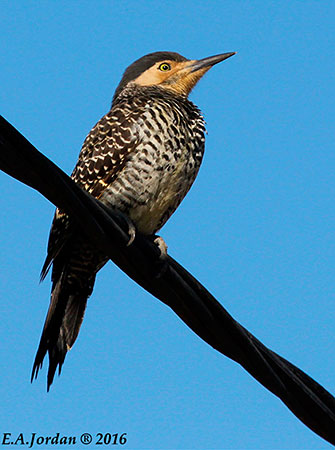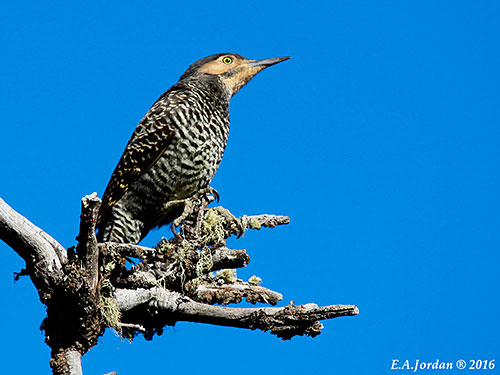
Fr: Pic du Chili
Ang: Chilean Flicker
All: Bänderspecht
Esp: Carpintero Pitío
Ita: Picchio del Cile
Nd: Chileense Grondspecht
Sd: chilespett
Photographers:
John Anderson
John Anderson Photo Galleries
Eduardo Andrés Jordan
MIS AVES – AVES DE ARGENTINA
Text by Nicole Bouglouan
Sources:
HANDBOOK OF THE BIRDS OF THE WORLD Vol. 7 by Josep del Hoyo-Andrew Elliott-Jordi Sargatal – Lynx Edicions – ISBN: 8487334377
A Wildlife Guide to Chile: Continental Chile, Chilean Antarctica, Easter ... De Sharon Chester – Editor : Princeton University Press, 2010 – ISBN : 1400831504, 9781400831500 – 400 pages
WOODPECKERS, an identification guide of the woodpeckers of the world by Winkler Hans and Christie David – Helm – ISBN: 0395720435
Project Noah – Chilean Flicker
Sistema de Información de Biodiversidad de la Administración de Parques Nacionales, Argentina
Wikipedia, the free encyclopaedia
Wikipedia, la enciclopedia libre
Chilean Flicker
Colaptes pitius
Piciformes Order – Picidae Family
INTRODUCTION:
The Chilean Flicker is found in C and S Chile and adjacent SW Argentina, where it frequents edges and openings in forests, riparian woodland and scrubby vegetation with scattered bushes.
It often feeds on the ground, foraging for ants, adults, larvae and pupae, but close to trees to be able to escape if threatened. It mainly searches for prey in stumps and rarely forages in trees.
The Chilean Flicker is a cavity nester. It excavates a nest in dead tree or snag, but also in earthen bank. The species is highly territorial.
The Chilean Flicker is described as rather common with stable population. The species is not globally threatened at the moment.

DESCRIPTION OF THE BIRD:
Biometrics:
Length: 32-34 cm
Weight: 100-163 g
The Chilean Flicker adult male has blackish-brown with narrow white or buff bars on the upperparts, including wing-coverts and tertials. On the upperwing, the flight-feathers are dark brown, but the primaries are notched whitish with pale shafts, whereas the secondaries show narrow whitish-buff bars. The rump is uniformly white or with few black spots, well visible in flight. The uppertail is blackish-brown, with outer and central rectrices narrowly barred white.
The underparts are whitish with broad, blackish-brown bars, tending to merge on the breast. The belly is plain or with smaller markings.
The underwing is yellowish with slightly darker tips. The primary coverts show some dark bars. The undertail is dark with yellowish markings.
On the head, the area from forehead to nape is dark slate-grey with blacker sides. The nape may rarely show hint of red. Lores, area around the eye and ear-coverts are buffish. The male shows a buffish malar area of about 5 mm wide, finely spotted black or black and red. Chin and throat are buffish-white with black spotting on the lower throat.
The bill is black, pointed, with curved culmen. The eyes are yellowish. Legs and feet are grey to greenish-grey.
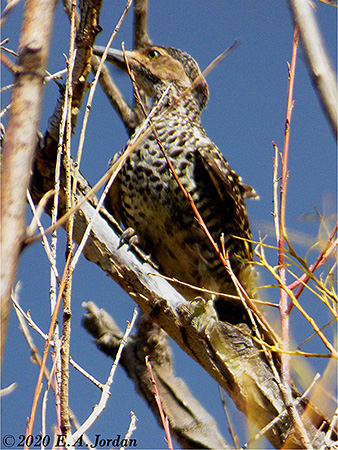
The female is fairly similar, but she has a pale buffish malar area without black or red. She never shows any red tinge on nape.
The juvenile resembles adult but it has blacker crown with narrow buff tips to feathers. The eyes are brown. The upperparts show broader barring and the underparts are more spotted.
RANGE:
The Chilean Flicker is found in C and S Chile, from the Coquimbo Region to central Magallanes Region, and in adjacent SW Argentina, between Neuquén and Santa Cruz Provinces.
HABITAT:
The Chilean Flicker frequents open wooded fields and woodlands, and occurs in open areas within Nothofagus forests. It is also present at forest edges, in riparian woodlands and scrublands.
The species ranges between 600 and 1,000 metres of elevation, but it may occur near sea level in winter.
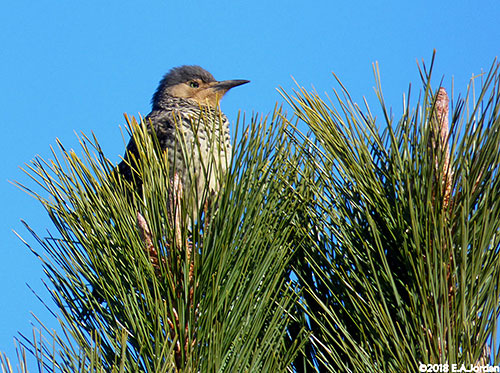
CALLS AND SONGS: SOUNDS BY XENO-CANTO
The Spanish name “Pitío” of the Chilean Flicker comes from the loud, ringing call “pit-tiu-pit-tiu-pit-tiu” often given in flight. In S Chile, popular belief states that it is a warning for visits.
We can also hear a whistle “kwee” given singly or in series, and a long “wic wic wic”. During encounters, it produces some “week-a, week-a”.
BEHAVIOUR IN THE WILD:
The Chilean Flicker feeds almost exclusively on ants, adults, larvae and pupae. It searches for prey in tree bark and inside fallen trunks and hollows. But the species also forages more often on the ground, usually close to trees, in grasslands and rocky areas.
On the ground, it hops and sweeps away debris and leaf litter, and also digs into the soil with the bill. It forages in trees only occasionally.
If threatened or alarmed, it flies into trees where it appears very nervous.
It is often observed in pairs, but also in family groups after the breeding season.
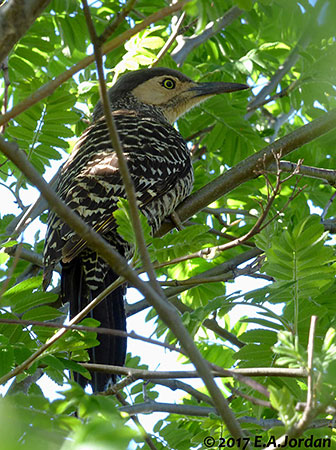
The behaviour of the Chilean Flicker during the breeding season is poorly known. However, some courtship displays have been observed. The bird is described performing head-swinging, bobbing and tail spreading.
The species may nest in excavated cavity in tree, but it also nests in earthen banks in which it excavates a deep cavity. It is highly territorial and the species is monogamous.
The Chilean Flicker is resident. It could be nomadic sometimes.
As usual in woodpeckers, the Chilean Flicker has an undulating flight with 5-6 wingbeats interspersed with glides on closed wings. The flight is low, heavy and very undulating.
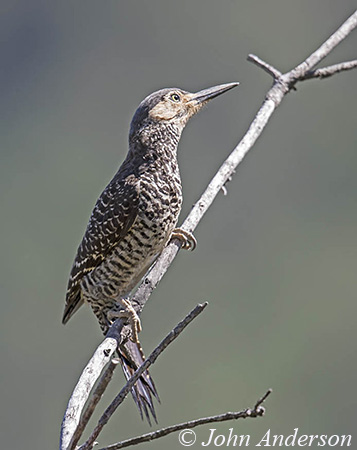
REPRODUCTION OF THIS SPECIES:
The breeding season takes place between October and December.
The Chilean Flicker is very territorial. It nests in tree cavities, but more often in excavated deep cavities in earthen banks, cliffs and steep slopes of ravines. Both adults usually work together.
In the central regions of the range, the nest-building starts in September, whereas in the southern part, this work may last until late October or November.
The female lays 4-6 white eggs. Incubation period, time to fledging and parental care are currently unknown.
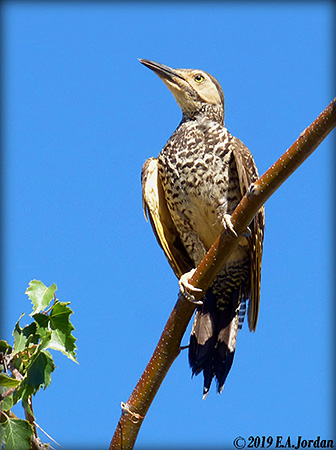
PROTECTION / THREATS / STATUS:
The Chilean Flicker is described as “fairly common”. The species is threatened by degradation and loss of its habitat, caused by degradation of the native forest and destruction of large trees with an advanced degree of rot, but which are good nesting sites.
However, the population is suspected to be stable, and the Chilean Flicker is currently evaluated as Least Concern.
